Parisian Walkways: The Bouquinistes of Paris
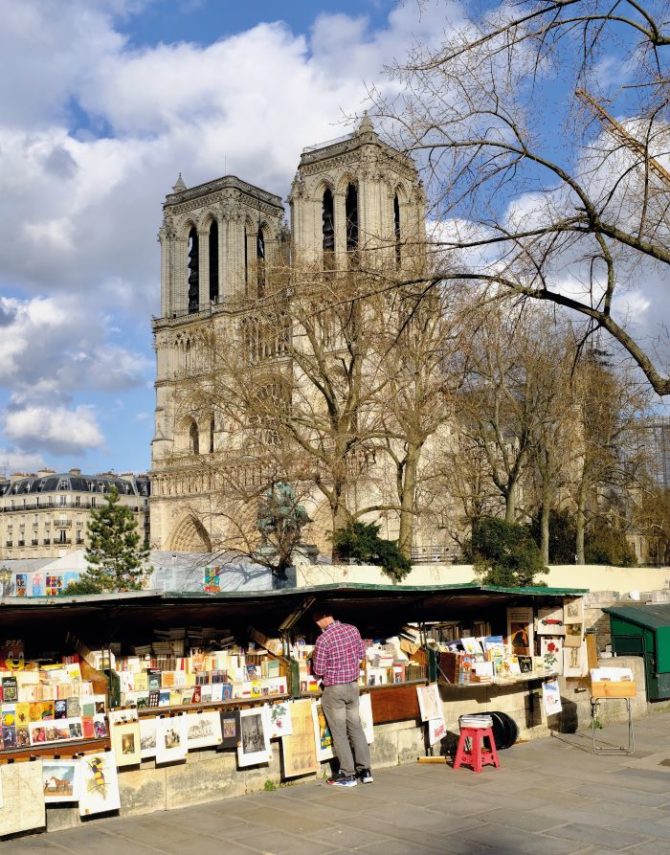
Jeffrey T Iverson browses through Paris’s famous outdoor bookstalls to meet the ‘brave merchants of wit’ who have lined the banks of the Seine for hundreds of years.
What is the most quintessential symbol of Paris? Is it the Eiffel Tower, this marvel of 19th-century French engineering? Or the Louvre and its pyramid, this iconic juxtaposition of ancient and modern? Perhaps Notre-Dame, in whose age-old bells one hears the city’s beating heart? Maybe. But there’s another symbol that’s equally poetic, though is often overlooked, so wholly integrated into the urban landscape it has become – the bouquinistes of Paris, the city’s ever-present outdoor booksellers. “These brave merchants of wit,” wrote the novelist Anatole France, “so worn by the air, the rains, the frosts, the snows, the fogs and the hot sun, that they end up looking like the old statues of the cathedrals.”
Their profession is unique in the world – hundreds of men and women working green bookstalls along the quays of the Seine throughout the year, braving the elements in hopes of tempting passers-by with a gilded tome or an ancient engraving. As the Swiss-born writer Blaise Cendrars once noted, Paris is “the only city in the world where a river flows between two rows of books”. And so it has been for longer than anyone can remember. “You could say bouquinistes are a bit of an anachronism,” says Jérôme Callais, president of l’Association Culturelle des Bouquinistes de Paris. “We’re not quite in sync with the modern world.”
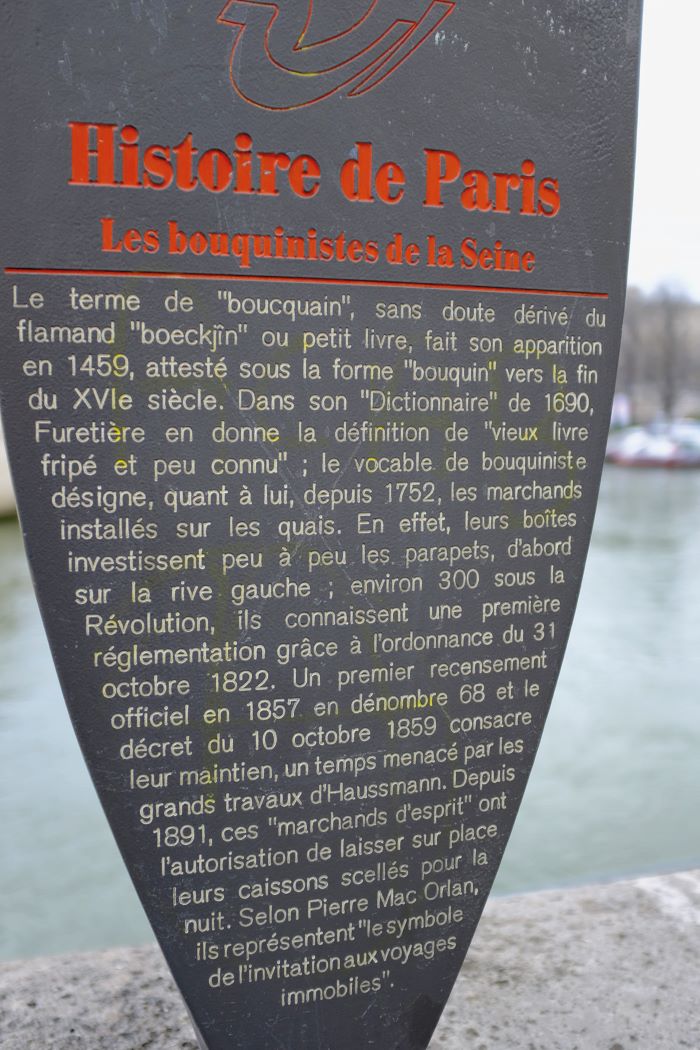
A plaque in Paris explaining the history of the bouquinistes. © JT Iverson
Yet today, the bouquinistes have reached a distinctly modern crossroads, their livelihoods threatened by online competitors, and now by a global pandemic which has reduced visitor numbers. Thankfully, while the profession seeks its place in the 21st century, there’s growing recognition in France of what a potent, precious emblem the bouquinistes truly are – not only for the capital, but for French culture in general.
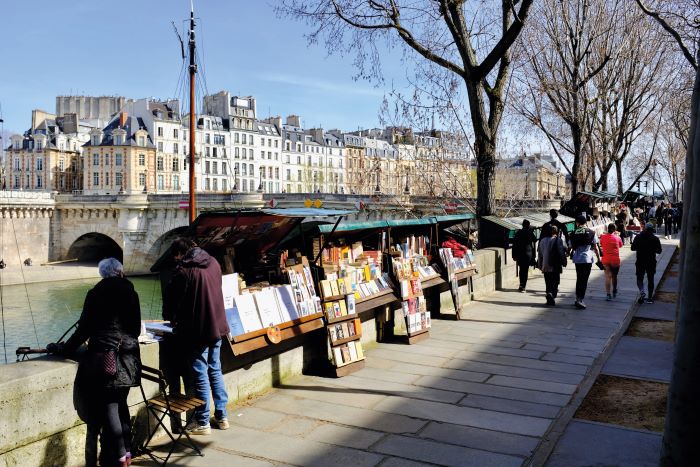
Quai de Conti overlooking Pont Neuf. © JT Iverson
The origins of the term bouquiniste are nearly as old as the printing press. The French word bouquin emerged in the 17th century and refers to an old book of little worth, coming from the Flemish boeckjin, which first appeared in 1459. The term bouquiniste first appears in the 1752 Dictionnaire de Trévoux to describe “those who sell old books or bouquins… The quays of the Seine in Paris are full of bouquinistes”. In a sense, though, the profession had been practised under other names for years. In César-Pierre Richelet’s 1680 Dictionnaire, an étaleur was defined as a “Poor bookseller who spreads out books on the edges of the Pont Neuf”, while colporteurs carried texts in baskets slung around their necks. Completed in 1606, the Pont Neuf was the first bridge in Paris not to be covered over with buildings, and thus this wide open space quickly became the favourite stomping ground for a plethora of peripatetic merchants – tooth pullers, boot scrapers, dog shearers, jugglers and, yes, étaleurs and colporteurs, the precursors of bouquinistes.
Over time, stone quays were built up on the banks along the Seine, providing the merchants additional real-estate. But as centuries passed, all these trades disappeared – save one. Today, around 230 bouquinistes, spread around 3km of quays, continue to ply their trade more or less as they have since the days of Henry IV. “Ours is undoubtedly the last strictly Parisian profession still in activity,” says Jérôme Callais. “There’s no equivalent anywhere else in the world. Only in Paris can you find an open air bookstore of such size and such history, open 365 days a year.” Their green boxes have lined the Seine’s parapets since 1891, when city hall first decreed bouquinistes could leave their merchandise on site. Each is allotted space for four of these 2m wide bookstalls. With roughly 80 bouquinistes on the Right Bank and around 130 on the Left, they completely encircle the islands of the Île de la Cité and Île Saint-Louis, from Quai de l’Hôtel de Ville to Quai du Louvre, and from Quai Voltaire to Quai de la Tournelle.
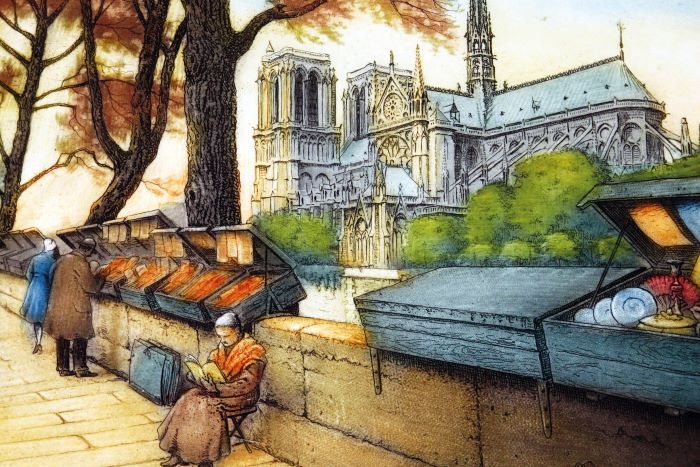
Colour Etching by Victor Valery (act.1889-1910)
So what makes a bouquiniste? With 80% over 40 years old, and nearly 40% over 65 years old, many bouquinistes have been at it for decades. Most are well educated, and yet they’ve chosen a profession which is physically taxing and often far from lucrative.
Why? Ask Callais, a colourful and outspoken defender of the profession, whose bookstall on the Quai de Conti overlooking the Pont Neuf is brimming with French classics and lovely vintage travel guides. “Being a bouquiniste is almost a state of mind, it’s a way of life, a philosophy,” he muses.
“You don’t become a bouquiniste to get rich. I think that it’s a profession you choose for the freedom it offers you, but also for all that you get a chance to share and learn with your clientele – that human element really counts.”
David Nosek, another long-time bouquiniste whose bookstall on the Quai du Louvre is filled with artwork, monographs and antiquarian books, loves the profession for similar reasons. “I may find myself in conversation one day with a homeless man and the next with a government minister,” laughs Nosek, who tried a number of other jobs, from a sound engineer to an artwork registrar for the Centre Pompidou, before finding his place as a bouquiniste. “I was never good at being someone else’s employee. I think we’re all drawn to this profession because we love books, but also because we have this desire for a certain independence, for freedom, like the hippies who used to flee the city to raise goats in Larzac!”
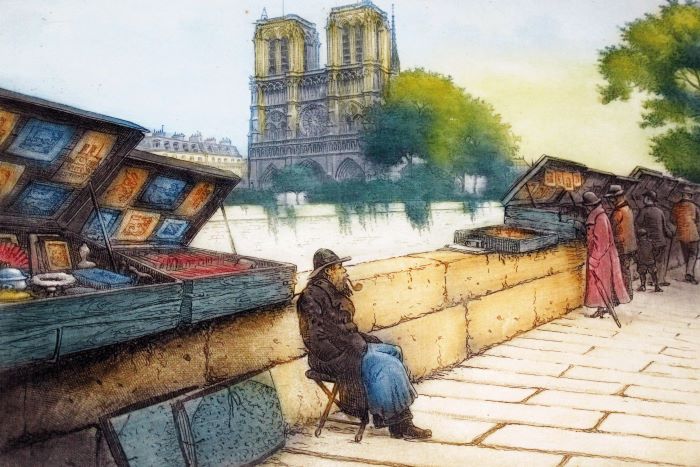
Colour Etching by Victor Valery (act.1889-1910)
That love of independence (and a certain romanticism) also characterises Ghislaine Thibaud, a renowned specialist of fashion periodicals from the 18th century to today with 30 years of experience. Growing up just a few streets away from where her bookstall sits today on the Quai de la Mégisserie, she was drawn to the profession from a young age. “I was always envious of the bouquinistes’ freedom, and the chance to work outside in the heart of Paris,” she says. “It’s a privilege to have this as my backdrop – the Pont Neuf, the Eiffel Tower, but above all la Seine. That’s what I love most about Paris. In the evening, when the sun sets over Paris, reflecting in the Seine – I’ve never gotten tired of that sight.”
Bouquinistes certainly aren’t your typical booksellers, nor is theirs a typical way of selling books. “The book lover who comes to the quays isn’t looking for something precise, which they’d be unlikely find,” says Nosek. “They have a wide range of interests, and come here to make a discovery.” As the late Anatole France described it, “I hardly ever pass by [a bouquiniste] without stumbling upon some book that until then I’d never realised I was missing.”
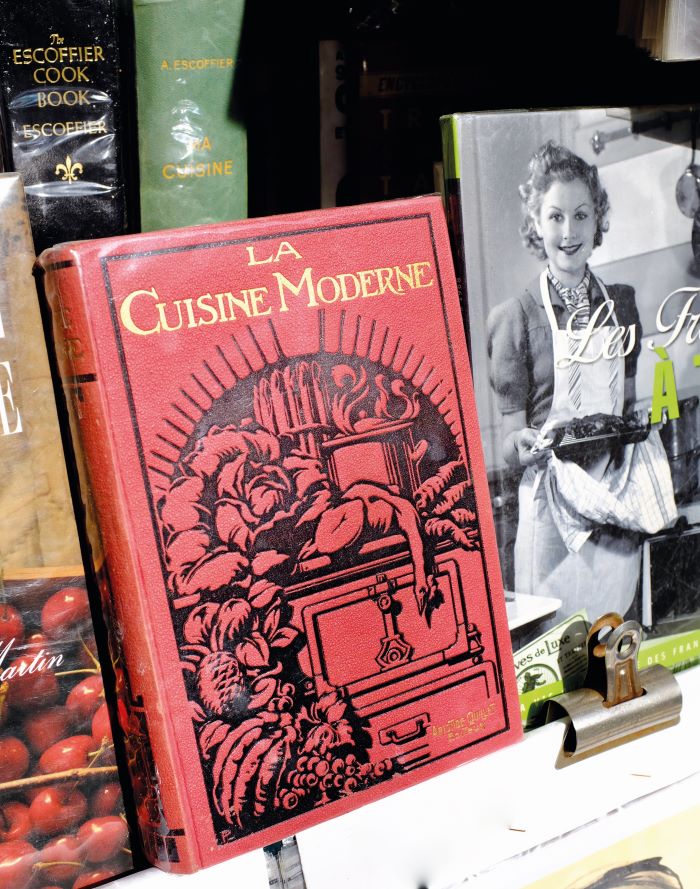
Alain Huchet on Quai de Conti specialises in books about cuisine and restaurant menus dating all the way back to the 17th century. © JT Iverson
Yet today, this age-old system is failing. Book lovers are increasingly using online platforms and the trend has grown in Paris in recent years, as the Yellow Vest movement, transportation strikes and finally the Covid-19 lockdowns have paralysed the city centre. Staggered by this perfect storm of crises, bouquinistes’ revenues have plummeted. “None of us expect to become millionaires,” says David Nosek, “but you need to at least make enough to buy yourself a sandwich.” Jérôme Callais worries the profession may never be the same. “It’s been really difficult for the last three years. During Covid, some of my colleagues have started to sell books online to compensate for their losses. My fear now is that they never return to the quays!”
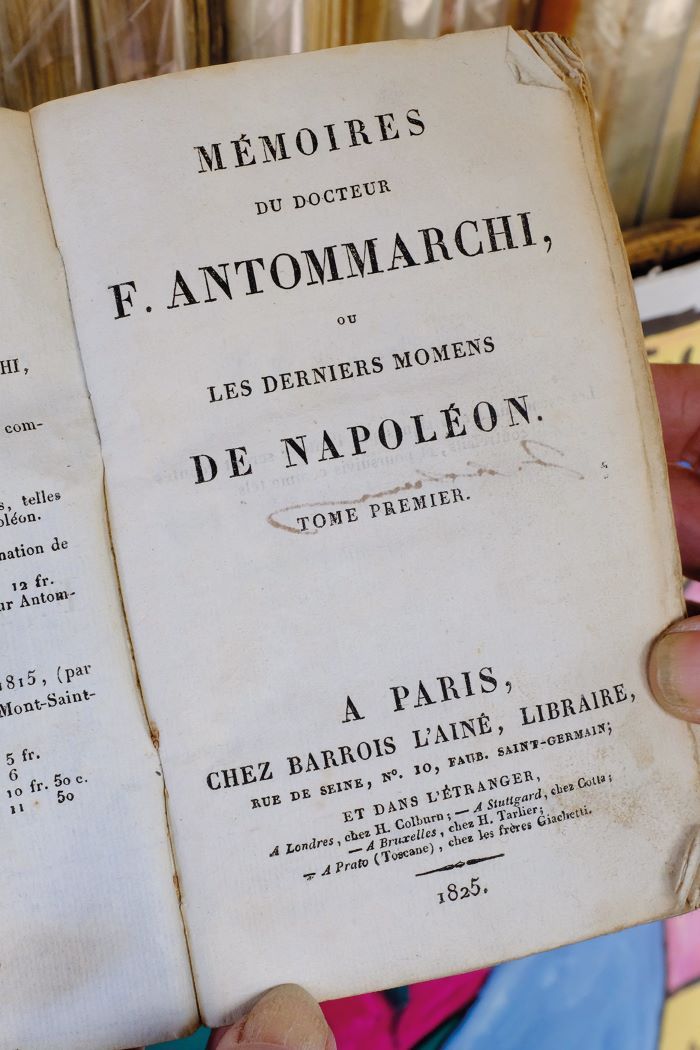
One of the rare books to be found in David Nosek’s stall. © JTIverson
ONLINE CHALLENGES
But does the internet have to spell death for bouquinistes? Perhaps not, says Clément Guarneri, who in 2017, at 25 years old, opened his Quai Saint-Michel bookstall specialising in Russian literature.
“I fell in love with the bouquiniste tradition,” he says. “So I became one, hoping that in my modest way I would be able to help preserve this profession. There’s good reason to be angry over this rather unjust system for selling books online. But we live in the 21st century, and perhaps instead of complaining we need to try to harness the internet for ourselves.” Which Clement and his wife have done, creating a Facebook business page called ‘La Bouquinerie du Quai Saint-Michel’ to post photos of new acquisitions and chronicle life on their picturesque quay overlooking Notre-Dame. “We’re using social networking to spread awareness about bouquinistes, and today it’s generating interest, and bringing books lovers back to the quays.”
Nearby, on Quai de la Tournelle, another bouquiniste is channelling her creativity and web savvy to weather the storm – Los Angeles-born Sydney Zekley. “Since the pandemic began I started listing books I have for sale on my Instagram page,” says the long-time collector of first editions by James Baldwin and other English-language writers. “Customers can either pick it up at the bookstall or else I will personally deliver it – I do ‘bouquiniste on a bike’!”
Veterans like David Nosek are delighted by this innovative new generation. “It gives us hope for the profession,” he says. “With more bouquinistes like them, things could be extraordinary again.” David, too, has brought new ideas, launching a free platform last year for bouquinistes to be able to present photos of their books online at bouquinistesdeparis.com.
“It’s resulted in a decent number of sales,” says Nosek, “and has helped bouquinistes to make ends meet during the pandemic.”
The efforts of such forward-thinking bouquinistes have generated attention from such highbrow media as Télérama and the New York Times. “I’m just trying to be creative to make the bouquinistes better reflect our times,” says Zekley. “I love the romance of being on the river, and the bouquinistes’ history, but I also want to thrive – I want people to want to come to the bookstalls, for there to be real excitement generated around the quays.” One reason for excitement came in 2019: following a campaign by Jérôme Callais and the bouquiniste association, the French Ministry of Culture added “the traditions and savoir-faire of the quayside bouquinistes” to France’s list of intangible cultural heritage – an honour in its own right, but also a stepping-stone to consecration by UNESCO. “It really changed the way people see us, and earned us a lot of respect,” enthuses Callais. The event sparked petitions and calls to save the bouquinistes by politicians such as Florence Berthout, mayor of the 5th arrondissement. “Bouquinistes contribute significantly to the literary soul of the City of Light,” she wrote. “Heirs to the colporteurs of the 16th century, they perpetuate an intellectual and bibliophile tradition that is an essential component of the Parisian identity.”
TIMELESS CHARM
So are the bouquinistes of Paris nearing their epilogue, or preparing their next chapter? Whether you’re a bibliophile or not, there are few experiences so quintessentially Parisian as a leisurely walk along the river in the late afternoon, admiring perhaps a delicate woodblock print hanging in a green bookstall, an old book of poems, or the setting sun glistening over the water. Without question, the bouquinistes are part and parcel of the timeless charm of Paris. As the poet Guillaume Apollinaire wrote in Le flâneur des deux rives in 1919, “I go as rarely as possible to big libraries. I prefer to stroll along the quays of the Seine, that wonderful public library… Without a doubt, there is no more beautiful walk in the world, nor any more pleasant.”
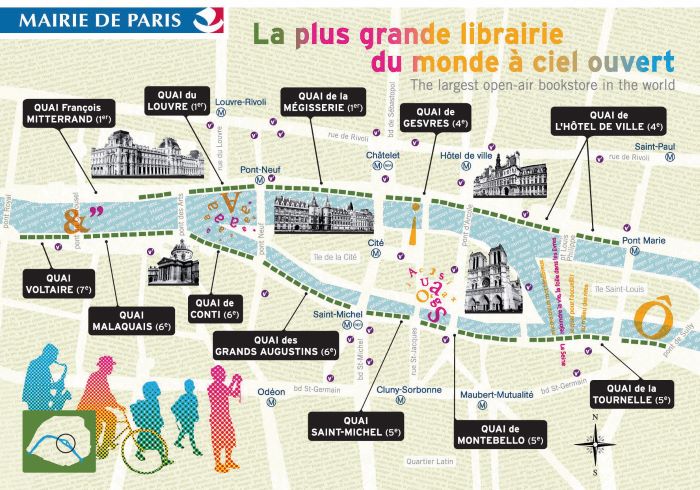
A map showing the positions of the bouquinistes along the Seine
BOUQUINISTES
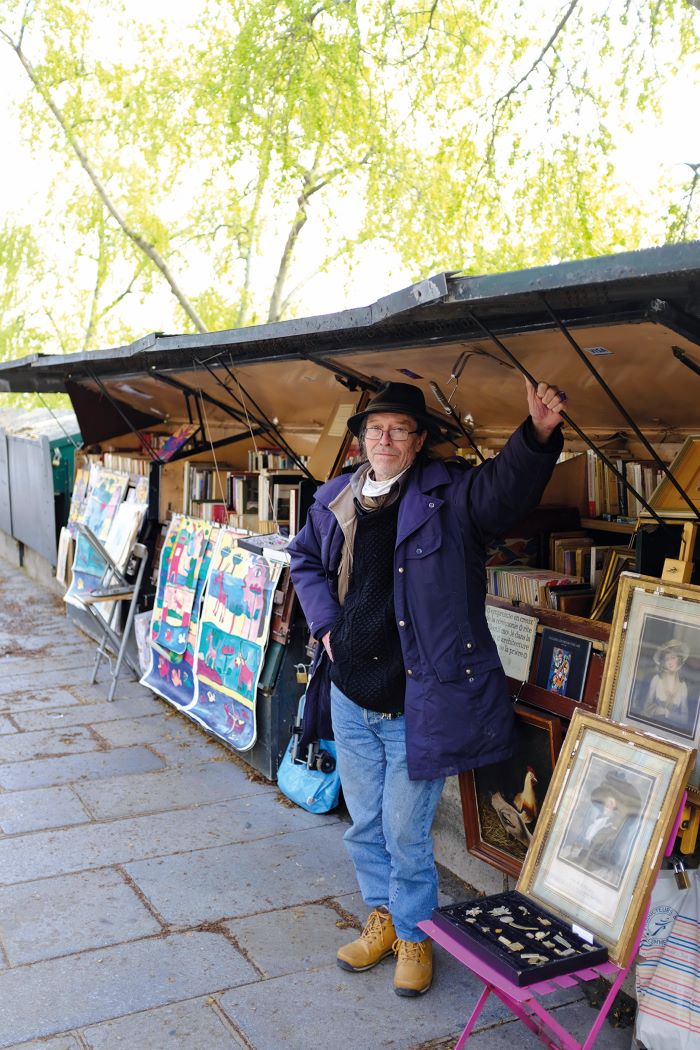
David Nosek © JT Iverson
DAVID NOSEK: Quai du Louvre, facing 22
Tel.+33 6 49 04 83 58
Once an art registrar at the Centre Pompidou, David Nosek brings deep passion for art and culture to his work as a bouquiniste. Besides works by French literary giants like Hugo and Chateaubriand, his collection includes numerous art and photography books, but also paintings acquired over the years, from works by the Art Brut master Jaber to the whimsical animal portraits of the artist Paetreus.
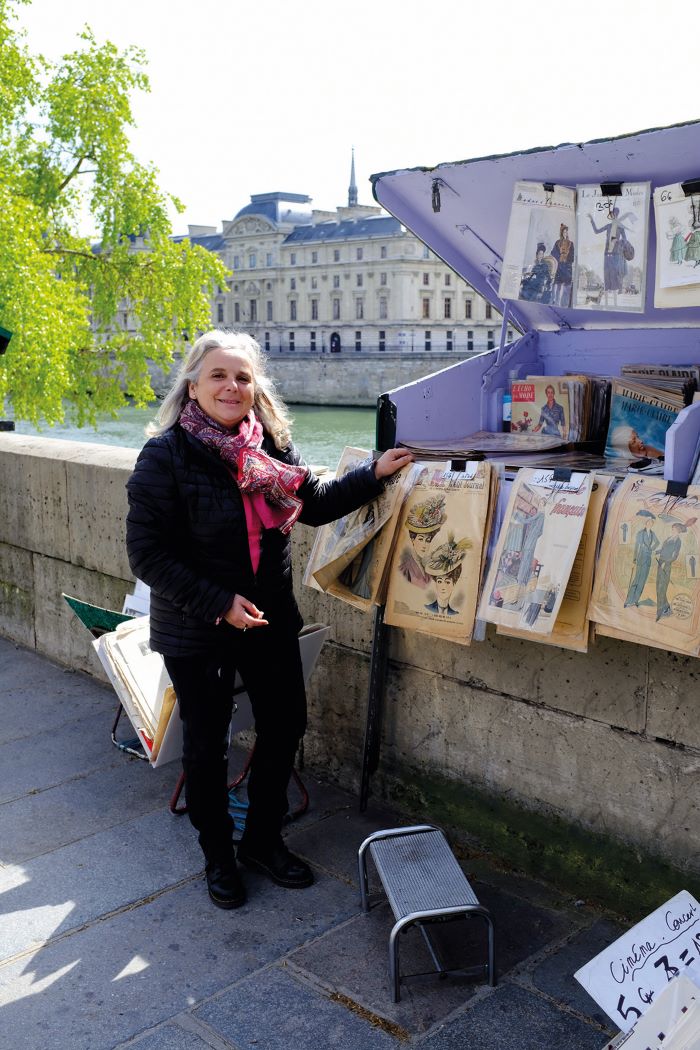
Ghislaine Thibaud © JT Iverson
GHISLAINE THIBAUD: Quai de la Mégisserie, just before Pont Neuf
Tel.+33 6 75 70 19 81
For nearly 30 years, Ghislaine has made her corner bookstall near Pont Neuf a mecca for lovers of fashion through the ages. Boasting a remarkable collection of historic French fashion publications going back to the 1800s, Ghislaine’s clients come for iconic 1920s covers of Le Jardin des Modes, biographies of Chanel or Yves Saint Laurent, and exquisite 19th-century engravings of period dresses.
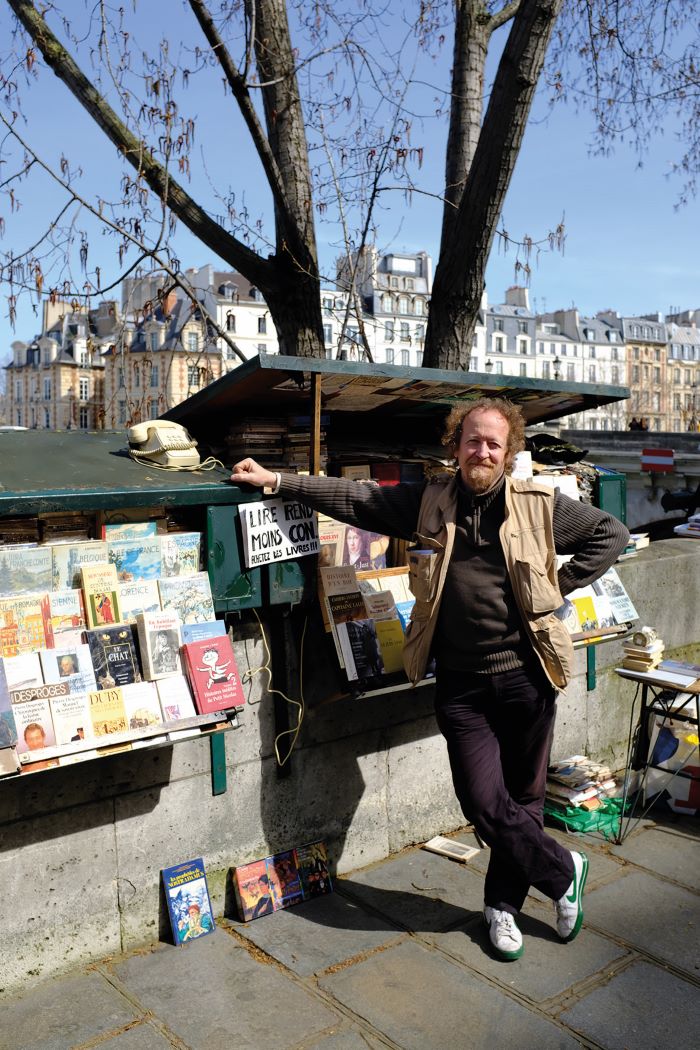
Jerome Callais © JT Iverson
JÉRÔME CALLAIS: Quai de Conti, facing Rue Guénégaud
Tel. +33 6 84 09 91 31
Situated for the past 30 years on beautiful Quai de Conti overlooking the Pont Neuf, Jérôme Callais proudly represents the bouquiniste profession. Callais has curated a collection of rare and out-of-print tomes offered at very reasonable prices, as well as a wealth of classic French literature, history and a superb selection of travel and adventure books from across the 20th century.
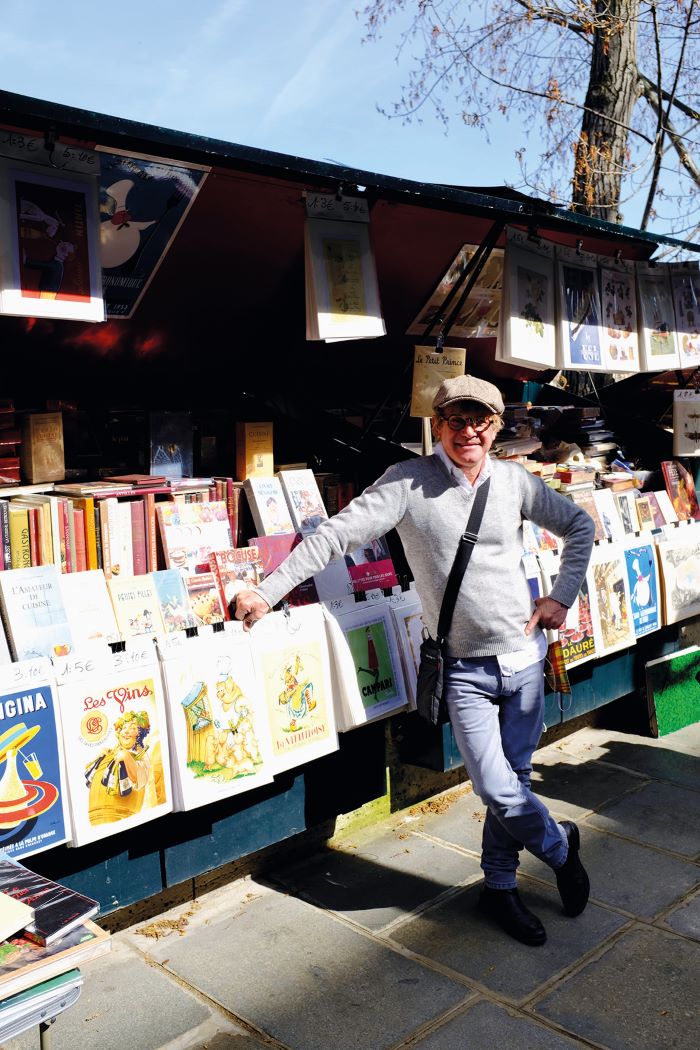
Alain Huchet © JT Iverson
ALAIN HUCHET: Quai de Conti, facing l’Hôtel de la Monnaie
Tel. +33 6 16 09 79 57
For culinary arts lovers, two Paris booksellers matter – Librairie Gourmande on Rue Montmartre and Alain Huchet on Quai de Conti. For 20-plus years, this former chef has assembled a delectable collection of culinary books and menus from the 17th century to today. A pristine copy of Curnonsky’s Cuisine et vins de France? A biography of Joël Robuchon? Huchet has required reading for foodies…

Sydney Zekley © JT Iverson
SYDNEY ZEKLEY: Quai de la Tournelle, facing 27
Tel. +33 7 68 61 09 94
This Los Angeles-born bibliophile joined Filo Loco, founder of the counterculture publishing house Serious Publishing, to create a bookstall dedicated to pop culture, rock ‘n’ roll, and a fabulous collection of English-language lit. Sydney’s picks include works by James Baldwin and other expats who wrote in France, as well as banned books first published here, from Lolita to Lady Chatterley’s Lover.
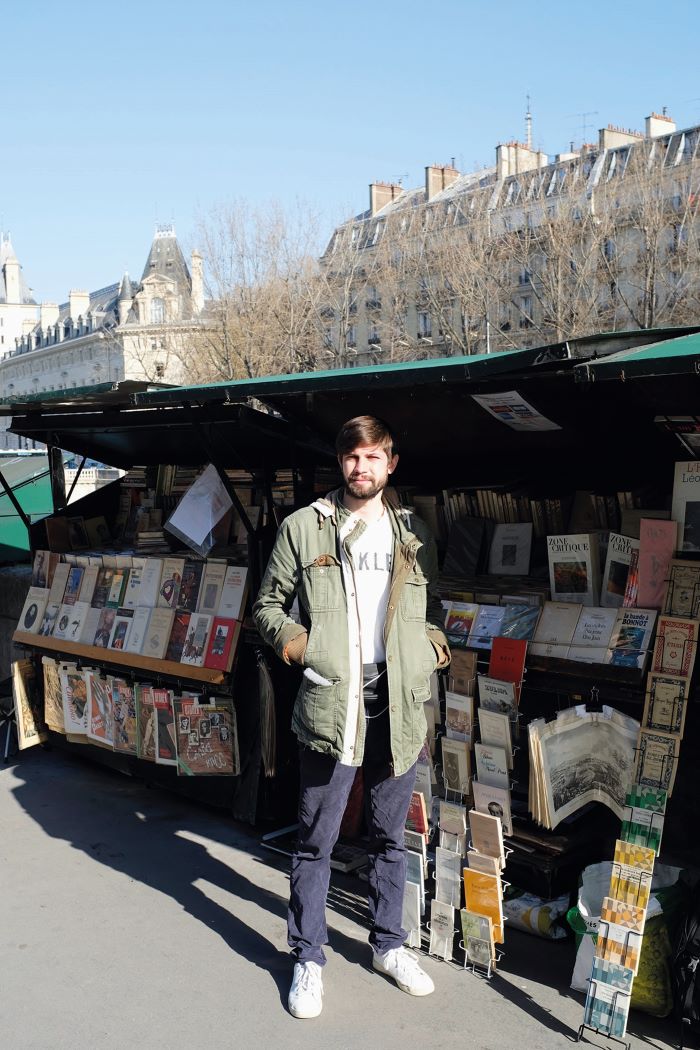
Clement Guarneri © JT Iverson
CLÉMENT GUARNERI: Quai Saint-Michel, facing 9
Tel. +33 7 82 33 60 12
One of the youngest and most impassioned bouquinistes in Paris, Guarneri is a Sorbonne graduate and Russian literature specialist. His bookstall celebrates the intellectual traditions of both France and Russia, with a wealth of French literature, history and philosophy, but also numerous Russian works translated into French, by the likes of Tolstoy, Pushkin, Dostoyevsky and Nabokov, from the Middle Ages to today.
From France Today magazine
Share to: Facebook Twitter LinkedIn Email
Leave a reply
Your email address will not be published. Required fields are marked *




REPLY
REPLY
REPLY
REPLY